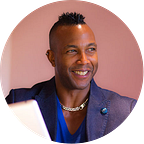Embracing inclusive UX in the design process.
Part One of a three part series examining the importance Inclusive UX plays in our world.
In today’s interconnected world, inclusive UX is essential; it’s not just a nice-to-have; it’s a core component of the UX research and design process. Imagine a world where digital accessibility is universal. Where everyone seamlessly navigates the digital landscape, regardless of their background or ability. Consider mobile apps designed with inclusivity in mind that provide built-in accessibility features and customisation options. These features would accommodate diverse preferences and abilities, a must-have for people with physical or cognitive disabilities. For instance, incorporating larger text sizes, high contrast colours, haptic support or voice command support.
The Heart of Inclusive UX Integration
Vernā Myers once said, “Diversity is being invited to the party; inclusion is being asked to dance.” This beautifully captures the essence of inclusive UX. It’s not just about recognising diversity; it’s about weaving inclusivity into every aspect of UX research and design to create a truly welcoming digital experience.
Take cultural sensitivity in design, for example. It’s about crafting content and interfaces that acknowledge and respect cultural differences, using appropriate language, imagery, and interactions. This could be as straightforward as designing avatars representing various ethnicities. Though it seems obvious, it’s a practice far from widespread.
Inclusive UX means crafting digital experiences where everyone feels welcomed and able to contribute. It’s about acknowledging the diversity of users and actively involving them in the design process.
Boosting Business with Inclusive UX
Inclusive UX isn’t just good for users; it’s a smart business move. By embedding diversity and inclusivity principles into the design process, products will appeal to a broader audience, enhancing user satisfaction, engagement, and loyalty. It’s not just about catering to a niche market; it’s about tapping into the potential of a diverse user base, unlocking previously untapped opportunities. This strategy not only broadens market reach but also strengthens brand loyalty and drives business success.
Sparking Creativity and Innovation
Inclusive UX as a core element in UX research is more than just an enhancement; it’s a catalyst for creativity and innovation. Embracing empathy and understanding within the design process can lead to groundbreaking solutions. By considering the diverse needs of all users - from tech-savvy youngsters to older generations who might struggle with new technologies — we fuel innovation. Diverse perspectives become the driving force behind designs that benefit and delight everyone.
Ethical Responsibility
Inclusive UX champions a design philosophy of creating with, not for, a wide range of human diversity. By integrating deep empathy into the design process, we create a digital world that’s accessible and empowering for everyone. A commitment to Inclusive UX serves a diverse user base, making it more meaningful to a broader audience and enhancing the user experience for everyone. Adopting inclusive UX principles transcends business strategy in the digital design world. It’s about doing the right thing.
Join the Conversation
How are you addressing Inclusive UX? Are you addressing Inclusive UX? What are the challenges you are facing? Are you weaving diversity into your UX research and design processes? Please share your experiences. Let see a digital world where inclusion is paramount, one that doesn’t just include but inspires and empowers all.
Sources:
Verna Myers: https://www.vernamyers.com/
Australian Dyslexia Association, The Australian Institute of Health and Welfare (AIHW) (neurodiversity), Australian Bureau of Statistics, 2018 Survey of Disability, Ageing and Carers (SDAC) (Autism Spectrum Disorder (ASD), Australian Census 2016.
